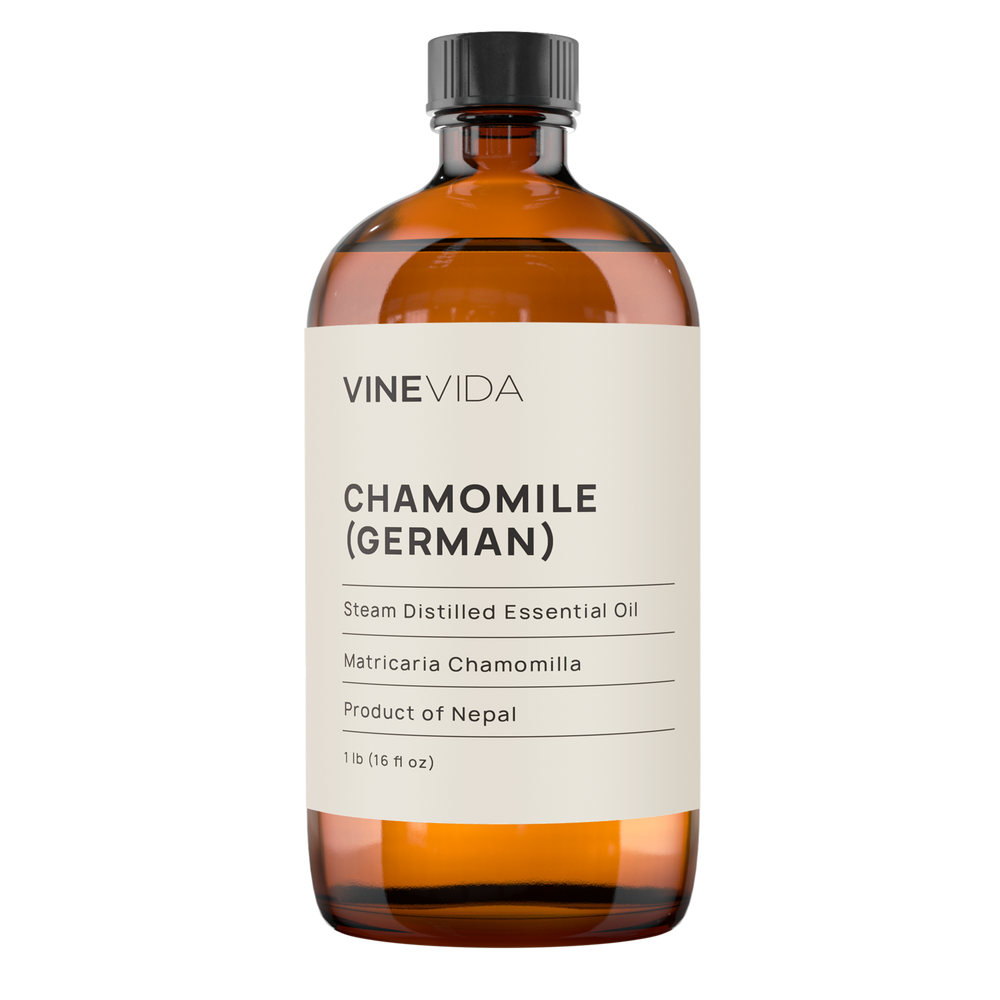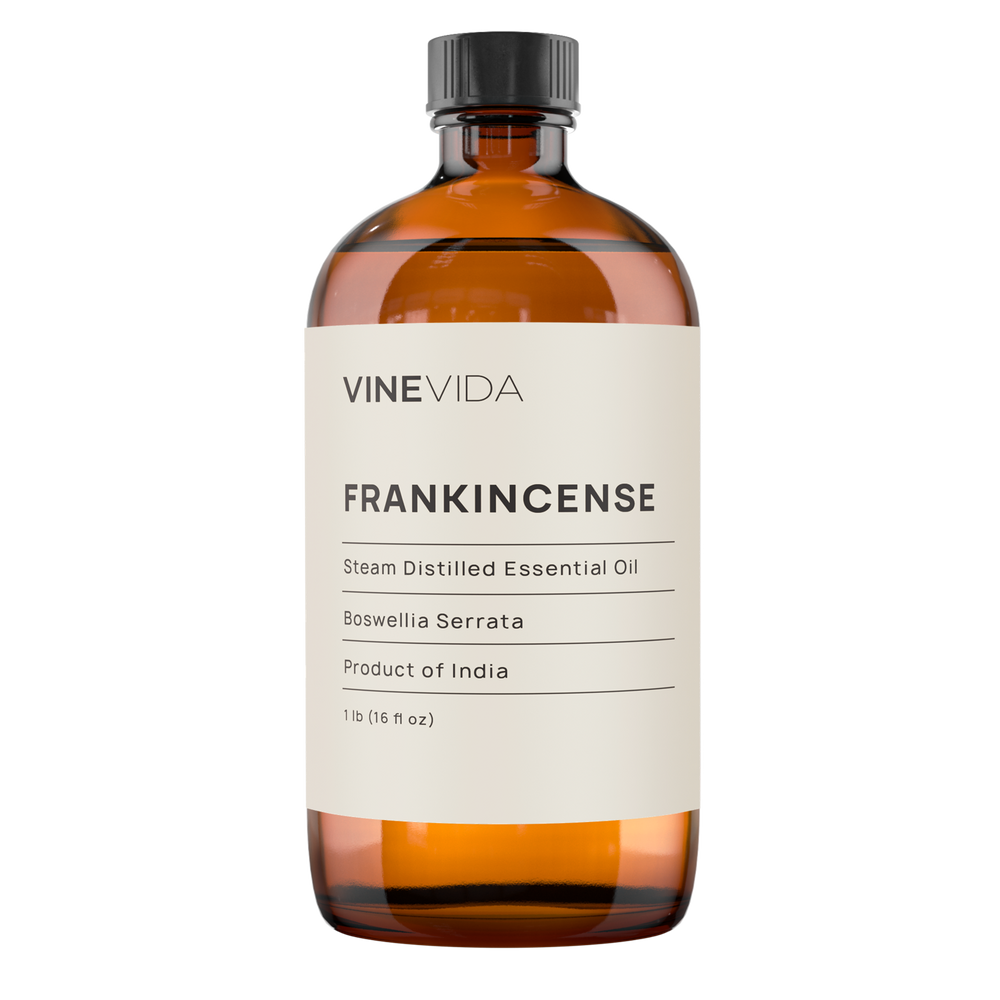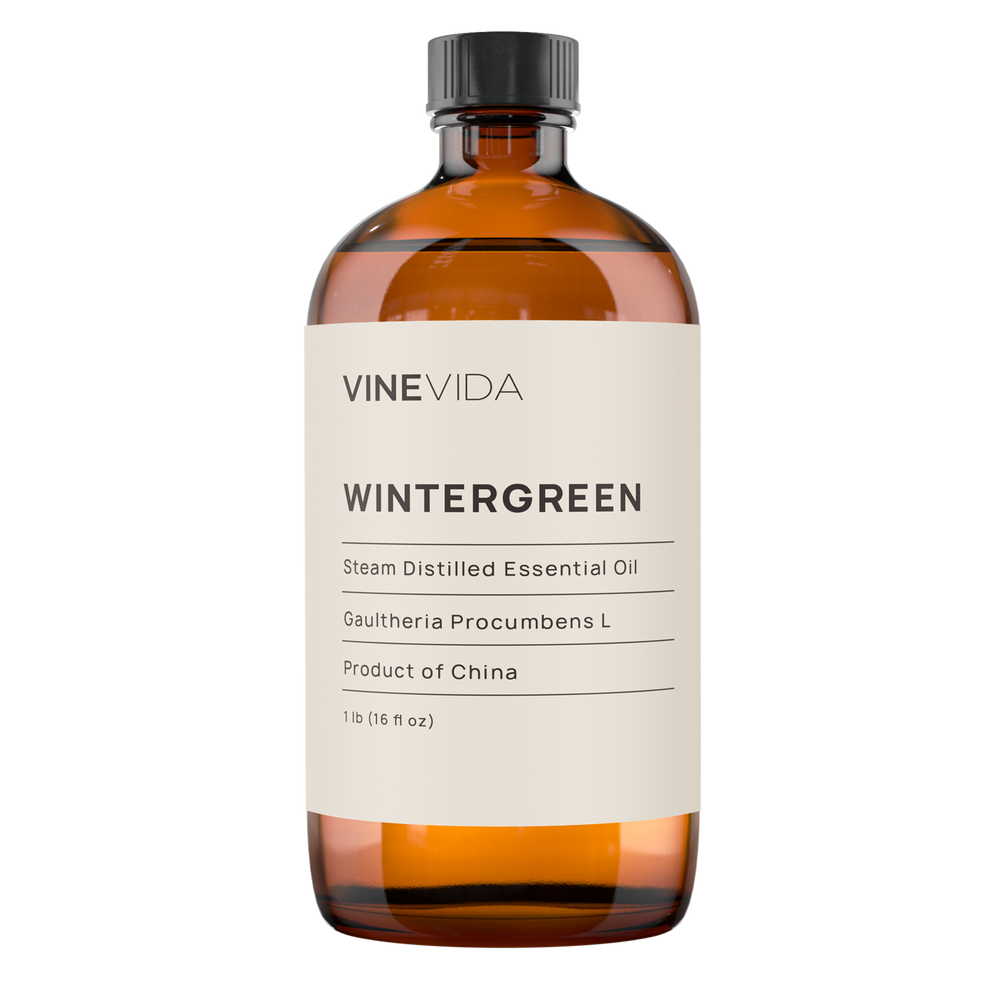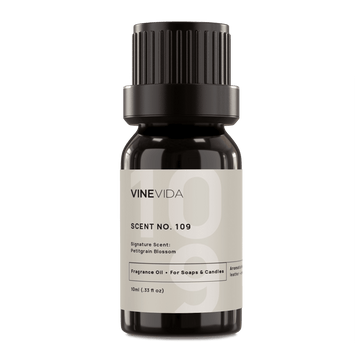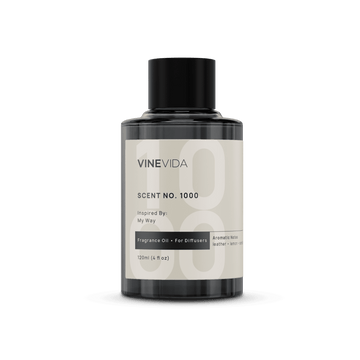One of the main things we get asked about is essential oils for osteoarthritis. Not surprisingly since there are around 365 million people living with the condition worldwide. About 73% of people living with osteoarthritis are over 55 years old, and about 60% of those are female. The knee is the most frequently affected joint, followed by the hip and the hand. Essential oils can be a great way to soothe pain and restore function back into the joint.
What is Osteoarthritis?
Osteoarthritis is a common degenerative joint disorder. It primarily affects cartilage, the protective tissue covering the ends of bones in joints. Cartilage is a resilient, rubbery tissue that covers the ends of bones in joints, serving as a cushion and allowing smooth joint movement. Over time, this cartilage undergoes wear and tear, leading to pain, stiffness, and reduced joint mobility.
Damage usually occurs in weight-bearing joints like the knees, hips, and spine. It can be due to a combination of factors, including aging, genetic predisposition, joint injuries, and obesity. As cartilage breaks down, bone spurs can then develop which make pain worse. Osteoarthritis is a chronic condition with no cure but various treatments, including lifestyle modifications, medication, physical therapy, and, in severe cases, surgery to repair or replace damaged cartilage can manage its symptoms and improve quality of life.
As a leading cause of immobility among the aging population globally, osteoarthritis is gathering increasing attention. The doctors main treatments for osteoarthritis are anti inflammatories in the forms of NSAIDs and COX-2 inhibitors. These have limited successes and are associated with negative consequences to health.
There are several categories of essential oils for osteoarthritis that can help in a variety of ways.
Analgesic Essential Oils for Osteoarthritis
Pain is a central and debilitating feature of osteoarthritis. Over time, the protective cartilage cushioning the ends of joints erodes, causing bones to rub against each other. This friction and bone-on-bone contact causes excruciating pain.
This pain is often described as aching, throbbing, or sharp.
Pain can be constant or intermittent. It often worsens with movement and activity. Chronic pain in osteoarthritis significantly impairs mobility, diminishes the quality of life, and may lead to muscle weakness and joint instability.
Managing pain is a primary goal in treatment, involving medications, physical therapy, lifestyle adjustments, and, in severe cases, surgical interventions to alleviate discomfort and improve joint function.
The best analgesic essential oils for osteoarthritis are Lavender, Chamomile and Yarrow. However other oils that can be helpful are Frankincense, Ginger, Rosemary, Juniper, Black Pepper, Copaiba, Myrrh and Turmeric. Important constituents are beta caryophyllene that may be able to modulate inflammation and pain, linalool which is analgesic and alpha pinene which is being researched for its remedial effects upon cartilage. Also of interest is the way that inhaling essential oils for osteoarthritis may be helpful for moderating pain. Inhalation of calming essential oils may help to raise levels of GABA. Pain signaling is altered by GABA levels.
GABA and Pain Signaling
Chronic pain is horrifically debilitating and can be made worse by a feedback loop from the nervous system, which affects pain memory.
The skin and joints are full of pressure and temperature receptors, which also monitor pain. We’ll examine one in more details when we get to the section on peppermint oil, because it acts through one of these receptors called TRPV8.
These receptors send information to the brain. So consider that when you stroke your arm, or pinch it, the brain recognises these as feeling different from one another. It does that through nerves that come from these receptor. Specifically, it uses a kind of nerve issue called a C Fibre. Messaging in C Fibres feel like dull aches.
Recent research shows that when information goes along these nerves, they can act abit like kissing gates.
One one hand they can go to the part of the brain that says “Look out, we can feel something here.” On the other, it sends messages that say “Pain, pain, PAIN”
There are two deciding factors which influence which way the gate swings. The first is GABA and the second is enkephalins.
Let’s start with enkephalins…
A bit like endorphins, but these are in the brain and the spinal column. Mainly we get them from exercise and excitement.
GABA is the body’s main calming neurotransmitter.
So, when information is passed like a relay from the joints to the brain, it goes along nerves. There are several nerves along the pathway, with gaps between. This is called the synaptic gap.
Neurotransmitters pass information across the synaptic gap.
If there are not enough enkephalins, or not enough GABA, then the brain registers what should be small amounts of pressure as pain.
Thus influencing GABA can be helpful to switch down pain signaling.
Inhaling Essential Oils for Osteoarthritis
When we smell something, it is processed to the brain by cells called olfactory neurons.
Olfactory neurons express GABA…in other words, when we smell calming essential oils, it produces GABA which then in turn changes our nervous systems response to pain.
So, whilst I do not recommend only inhaling essential oils for osteoarthritis (lotions and massage oils containing essential oils for osteoarthritis are going to be much faster) as a long term solution, inhaling calming essential oils such as lavender, chamomile, frankincense and myrrh may have profound effects on your lived experience of pain.
Usually inhaling essential oils for osteoarthritis for five minutes, twice a day can have remarkable effects not only on pain but also on mood and mental wellbeing.
Lavender (Lavandula Angustifolia)
Lavender is soothing and calming and contains high levels of linalool which has both analgesic and anti-inflammatory properties as well as being anti-nociceptive (nasty sensations of pain etc. (Huo, 2013)
A study done by Birjand University of Medical Sciences assessed 90 patients who referred to the outpatient rheumatology clinics for osteoarthritis of the knee. They were randomly assigned to three groups: (aromatherapy massage with lavender essential oil, massage with blank almond carrier oil) and a control who did not have massage at al. The patients were evaluated at recruitment, immediately after the massage, 1 week, and 4 weeks after that initial massage , and were assessed for pain via visual analogue.
Pain severity of the patients in the lavender essential oil group was significantly different immediately after 1 week after the intervention. However, at 4 weeks there was no significant difference between the groups.
Additionally, patients with osteoarthritis are more vulnerable to sleep problems (Romero, 2022) which can be greatly helped by lavender essential oil.
If you can manage to get in the bath, lavender essential oil is marvelous for helping soothe aches and pains and helping you sleep.
Also combine with other essential oils for osteoarthritis for massage oils and for soothing creams and lotions.
Maximum dilution: 3%
Safety: Lavender essential oil is not suitable for the first 16 weeks of pregnancy.
German Chamomile (Matricaria Chamomilla)
German chamomile contains a chemical group called azulenes, which are like liquid anesthetics. Specifically, the group in german chamomile are chamazulenes. These are what turn the essential oil blue and leads to the name Blue Chamomile.
A trial done in 2015 showed that when people massaged their poorly knee with a preparation made with German Chamomile they found they needed to take less pain killers. (Shoara, 2015)
Research shows that one of its constituents α-Bisabolol reduces the inflammatory response and protects chondrocytes. (Xu, 2020)
We’ll look at chondrocytes more in the section on frankincense, but they are the cells that make up cartilage.
We also know that chamomile essential oil is extremely soothing. It would appear that α-Bisabolol interacts with the GABA receptor in German Chamomile. (Tabari, 2017)
Other good essential oils for osteoarthritis that have azulenes are blue cypress, blue tansy and yarrow.
Maximum dilution: 3%
Safety: Not suitable for use in the first 16 weeks of pregnancy.
Myrrh (Commiphora Myrrha)
Synthetic opioid medications carry a strong risk of overdose and addiction.
Myrrh essential oil interacts with the powerfully painkilling Mu opioid receptors. When compared, myrrh has the painkilling strength of around 10% of that of morphine.
Myrrh essential oil belongs to the Commiphora species. This species is often used in traditional medicine as painkillers and anti-inflammatory agents.
In a recent clinical trial, a TCM medicinal formulation containing extracts of Commiphora myrrha (gum resin) showed pain relief and no severe adverse effects when given (orally) over a period of 12 weeks in people experiencing knee OA [Lee, 2020].
In aromatherapy, obviously you would use myrrh essential oil topically. Adding a few drops to an ointment can be wonderful, especially when you add in the actual rubbing that it takes for the ointment to absorb.
Maximum dilution: 3%
Safety: Not suitable for use in the first 37 weeks of pregnancy.
Using Essential Oils For Joint Pain and Inflammation:
Inflammation plays a crucial role in how osteoarthritis progresses. Initially, OA is often characterized by low-level inflammation in the affected joint. This inflammation triggers a cascade of events leading to the breakdown of cartilage.
Inflammatory chemicals, such as cytokines and enzymes, are released, further damaging the cartilage and causing pain.
Frankincense (Boswellia Serrata)
Frankincense essential oil is extremely high in an important constituent called alpha pinene.
Importance of Alpha Pinene
Alpha pinene has anti-inflammatory properties and is being researched for its remedial effects on cartilage.
Cartilage is composed of cells known as chondrocytes. Generally, chondrocytes are found inside the discs of the vertebrae and anywhere where that tissue should line the joints.
It is a live tissue and should cushion joints when they move.
Chondrocytes maintain homeostasis of the cartilage. Surrounded by collagen fibers, chondrocytes release substances to strengthen it and make it more flexible.
As well as adding structure and supporting movement in the joints, chondrocytes repair tissue damage after injury.
The analgesic action of pinene seems to be executed through the Mu opioid receptors. (Myrrh uses the same ones.)
Studies also suggest these are probably to be supraspinal, suggesting that receptors send messages from the spinal cord to the brain.
Since there are so many chondrocytes in the spine, it suggests the most effective way to use frankincense essential oil for osteoarthritis pain is probably through a back massage.
Boswellia serrata used in Ayurvedic medicine for rheumatic pain and inflammatory diseases. Several randomized clinical trials have demonstrated that extracts from Boswellia serrata provide relief from arthritis-related pain and stiffness from knee osteoarthritis [155]
Alpha pinene is found in the oils of many species of many coniferous trees, notably the pine as well as rosemary and eucalyptus, as well as other essentials for osteoarthritis.
Restores Elasticity
One of the key areas that frankincense is clever is how it restores elasticity to tissues (that’s why it is great for wrinkles and preserving mummies).
It’s a great way to get some flexibility back into those joints.
Slows The Breath
Very prayerfully meditative, but so good for stress and just helping to relax. It’s a wonderful choice for your inhalation work too.
Maximum dilution: 3%
Safety: Not suitable for use in the first 16 weeks of pregnancy.
Juniper Berry (Juniperus Communis)
Juniper is a very cleansing oil. It detoxifies the joints and really rinses out the system of toxins.
It should be noted that alpha pinene comprises around half of this essential oil too.
In my opinion, this is the best oil for arthritis in knee and elbow joints.
Note, that the detoxification of the joints comes at a price with this one…you will wee more.
Maximum dilution: 3%
Safety: Not suitable for use during pregnancy or if you have kidney disorder. It is too heavy a diuretic.
Black Pepper (Piper Nigrum)
Black pepper contains high levels of beta caryophyllene.
Beta-caryophyllene has gained significant attention for its interaction with the CB2 receptor, one of the two primary cannabinoid receptors in the endocannabinoid system (ECS).
The CB1 is located mainly in the brain and the spinal column and is involved in regulating mood, memory, cognition, appetite and pain. It is implicated in the intoxicating effects of cannabis.
The CB2 receptor is primarily located in the periphery, on blood cells and lymphatic tissue. It regulates inflammation, immunity and pain. Unlike CB1, the CB2 receptor does not produce psychoactive effects.
In a study done in Taiwan in 2014, sixty patients were treated with a cream either an unscented cream or one containing 3% concentration each marjoram, black pepper, lavender, and peppermint essential oils for their neck pain.
They were asked to use it for 4 weeks, daily, after showering or bathing.
Both groups saw an improvement, but the essential oils group had much greater pain tolerance in the left upper trapezius and right upper trapezius as well as much improved range of motion. (Ou, 2014)
Beta Caryophyllene is also found in other plants, including cannabis, copaiba, and clove.
Maximum dilution: 3%
Safety: Not suitable for use in the first 16 weeks of pregnancy.
Copaiba (Copaifera Officinalis)
Again, rich in beta caryophyllene, and wonderful for pain.
Maximum Dilution: 3%
Safety: Not suitable for use in the first 16 weeks of pregnancy.
Peppermint (Mentha Piperita)
Peppermint acts upon pain differently than other essential oils for osteoarthritis. It uses a receptor called TRPV8, which is activated by menthol from the mint.
This receptor has three jobs. It monitors mechanical pressure, also temperature and pain.
So if you think about how your mouth feels cold when you’ve cleaned your teeth, that shows one action. Think of how holding ice in your hands will eventually feel painful, and then also think about how suddenly it can feel like your handbag is digging into your shoulder. All of these thoughts come from the same receptor.
Thus cold can confuse the receptor to switch pain down…in effect, it freezes it.
Maximum dilution: 3%
Safety: Not suitable for use in the first 16 weeks of pregnancy.
Rosemary (Rosmarinus Officinalis)
Joint inflammation is not the only source of arthritic pain. Some people living with osteoarthritis (OA) or rheumatoid arthritis (RA) also have neuropathic pain where there's damage to the actual nerves themselves.
Neuropathic pain tends to feel like it is sharp and stabbing rather than a dull ache.
The most potent help for this kind of pain is rosemary essential oil, (also combine with German chamomile and Yarrow)
Rosemary reduces the pain and inflammation of osteoarthritis (Mohammadafar, 2021)
Ginger (Zingiber Officinale)
Ginger is one of the most popular essential oils for osteoarthritis because of how it warms the joints. It helps alleviate joint stiffness and spasm, and reduces pain. (Sritoomma et al., 2014; Yip and Tam, 2008). It is shown to have anti-inflammatory and analgesic skills, but it also has a tremendous effect on mood.
Ayurveda speaks of how ginger stokes the fire of Agni, the metabolic fire that not only fuels the body, but also the mind. This is one of the best essential oils for osteoarthritis when the spirit is beginning to wane from being worn down by the disease.
One study showed ginger extract to have a statistically significant effect on reducing symptoms of osteoarthritis of the knee. (Altman, 2001)
Is Ginger Essential Oil The Best Choice?
Constituents in ginger affect inflammation and pain signaling in a variety of ways.
However, again, like frankincense we have a similar situation where not all of the active constituents pass through distillation. Examples of this are gingerol and shogaol. These are found in the CO2 extraction, though. Most aromatherapists would now use this in addition to ginger essential oils for osteoarthritis because gingerol and shogaols inhibit manufacture of prostaglandins and leukotrienes.
If your body produces too many prostaglandins it can lead to unwanted and unhelpful inflammation in your body. Excessive levels of prostaglandins can contribute to increased pain sensitivity
Leukotriene contributes to the generation of neuropathic pain signaling.
Additionally, they can also inhibit synthesis of pro-inflammatory cytokines such as IL-1, TNF-α, and IL-8.
Ginger reduces the elevated expression of NFκB and TNF-α in rats. (Habib, 2008) The activation of NF-κB is linked to a variety of inflammatory diseases, including arthritis.
Additionally, distilling ginger, as opposed to using a maceration (soaking ginger into warm oil for a few days) seems to alter other constituents too. One study showed that ginger macerations had approximately twice the amount of zingiberene when compared to ginger essential oil; and one and a half times the amount of sesquiphellandrene than ginger essential oil.
Further the ginger essential oil they tested didn’t seem to possess curcumene and β-bisabolene either. Since zingiberene, sesquiphellandrene, curcumene and β-bisabolene are important anti-inflammatory agents, it could be suggested that the traditional and conventional ginger oils possess more anti-inflammatory effects. (Shirooye, 2008)
So, start with ginger essential oil, but you might want to diversify and add to your ginger oil collection! Perhaps explore Ginger CO2 or experiment with making your own ginger oil.
Cautions with Ginger Oil
It’s worth remembering that although essential oils do not have side effects, they do have many main effects.
Ginger oil speeds things up, and it heats things up.
That means your brain gets faster, you burn fat faster, you get much hotter (so not great if you are already having hot flashes) and it is incredibly laxative. Go easy on the stuff!
Maximum dilution: 3%
Safety: Not suitable for the first 16 weeks of pregnancy.
Wintergreen (Gaultheria Procumbens L)
Interestingly, up until about fifteen years ago, wintergreen essential oil was classed as a hazardous essential oil and was on the aromatherapists no-go lists.
This was based on the fact it is very easy to accidentally overdose on wintergreen essential oil, which can be lethal. Today aromatherapists are taught to take thorough case histories, especially around other medications, creams and lotions and diet, in order to prevent this.
Wintergreen is one of the best essential oils for arthritis because of its high levels of a constituent called Methyl salicylate (almost 99% of the oil.).
Best known for its soothing and analgesic properties, methyl salicylate is a valuable ingredient in numerous, topical creams, and even some food products.
Methyl salicylate is an ester. Esters are a versatile chemical group, important in pharmaceutical development. They make medications smell and taste better. Esters possess anti-inflammatory properties and improve how well the body absorbs other medicines.
Its analgesic properties have made it a key component of many over-the-counter pain relief products, particularly topical ointments and creams designed to alleviate muscle and joint pain.
When applied to the skin, it produces both a warming and cooling sensation, which helps to distract from pain and discomfort.
Methyl salicylate serves as a precursor for the synthesis of salicylic acid, the compound that forms the basis of aspirin. In fact, aspirin was originally derived from salicylic acid, which can be synthesized from methyl salicylate. Methyl salicylate thins the blood.
Maximum dilution: 2.4%
Safety:
- Not suitable for use in the first 16 weeks of pregnancy. Do not use it if already taking with other medications, ointments or liniments that may contain wintergreen or methyl salicylate.
- Not suitable for people with platelet clotting disorders, or who are taking anticoagulant medications. Cease use 48 hours before planned surgeries.
Massage With Essential Oils for Osteoarthritis
In the United States, most people use essential oils for osteoarthritis in massage oils and roller balls. However, integrating essential oils for osteoarthritis into massage can be really helpful. This also includes using ointments that need to be rubbed in, rather than a simple stroking action you might use for a lotion, for example.
Scientific research has provided evidence supporting the use of massage therapy as a complementary approach for managing osteoarthritis (OA). It can help reduce pain associated with OA by increasing blood flow, promoting the release of endorphins (natural painkillers), and relaxing tense muscles.
A 2018 study done by the Institute of Alternative and Complementary Therapy in New Jersey found that massage therapy led to significant pain reduction for patients with knee osteoarthritis in comparison to light touch. 222 adults with knee osteoarthritis enrolled, 200 completed 8-week assessments, and 175 completed 52-week assessments. Weekly massage sessions improved pain levels and physical function as well as reducing stiffness.
Having massage sessions every two weeks (after the initial eight weeks) maintained improvement, but the therapy did not provide any further improvement. (Perlman, 2018)
Massage Improves Perceived Quality of Life
Two hospitals in Connecticut examined the benefits of Swedish massage for patients being treated for osteoarthritis. Participants reported feeling more relaxed and having improved ability to perform daily duties and enhanced quality of life which they associated with their massage treatments. (Ali, 2017)
Documents Review of Essential Oils for Osteoarthritis
So the evidence for massage for osteoarthritis is excellent, but when you add essential oils for osteoarthritis into the mix, the results look even better.
In 2021, an evidence review was conducted into rheumatic diseases by the Institute for Health Sciences from Federal University of Bahia, in Brazil. They identified 13 articles, four talked about essential oils for osteoarthritis, three for rheumatoid arthritis, and three for fibromyalgia. Two more studies included patients with rheumatoid arthritis and osteoarthritis. The number of participants involved in the studies varied from 9 to 162, and 60-100% were female subjects. The ages of the subjects ranged from 36 to 78.3 years old and the duration of their conditions ranged from 1-11.67 years.
Lavender essential oil was the most commonly used oil, then Ginger and Rosemary essential oils. Time of treatments using essential oils varied from 2 to 12 weeks. All studies but one (91.6%) have demonstrated the efficacy of aromatherapy. (Paixão,2021)
Elderlies Study for Essential Oils for Osteoarthritis in the Knees
A study of 90 elderly people with osteoarthritis in their knees was carried out in two nursing homes. They were divided into three groups of aromatherapy, massage and control groups. Data were collected in weeks 0, 4, and 8, These were on a patient information form, Western Ontario, Osteoarthritis Evaluation Scale, and assessment of Knee and Hip Quality of Life Scale.
Massage and aromatherapy groups received massage, twice weekly, for three weeks for 15-20 mins. For their treatments rosemary and ginger were the essential oils for osteoarthritis added to black seed carrier oil.
The pain scores were lower in the aromatherapy group than the massage group and control groups. The quality of life scores were significantly higher than the massage and control groups by week 4. The week 8 findings showed that aromatherapy has more favorable and longer sustained effects than the massage.
Why not try some of our DIY Essential Oil Recipes for Osteoarthritis?
Quick Review of The Most commonly Asked Questions
What Is The Strongest Essential Oil For Pain
Choose blue oils like German Chamomile and Yarrow for their azulenes. Blend them with an oil with high levels of beta caryophyllene, to switch pain down. Good choices would be black pepper and copaiba.
Essential Oils For Joint Pain And Inflammation
The two together, I’d go lavender, juniper and frankincense.
How To Use Frankincense Oil For Knee Pain
Without doubt, add it to an ointment base, combine with a pain killing oil like chamomile and rub it in twice a day. Don’t forget to o the inhaling work to settle down neurotransmission too (see the start of the article out influencing GABA)
Best Oil For Arthritis In Knee
Juniper, copaiba, frankincense…but you are also going to need some lavender, chamomile or yarrow to really soothe it too.
Conclusion
There are many different ways essential oils for osteoarthritis can be helpful. A combination of weekly massage, with a home treatment of an ointment that you use twice daily, and also some work inhaling calming oils like lavender, chamomile or frankincense can have a remarkable effect.



